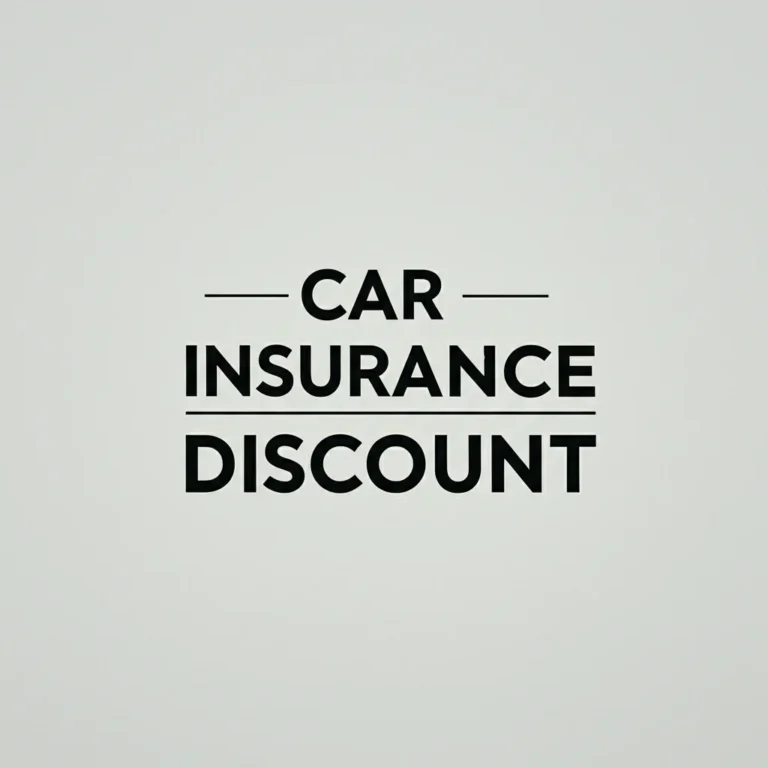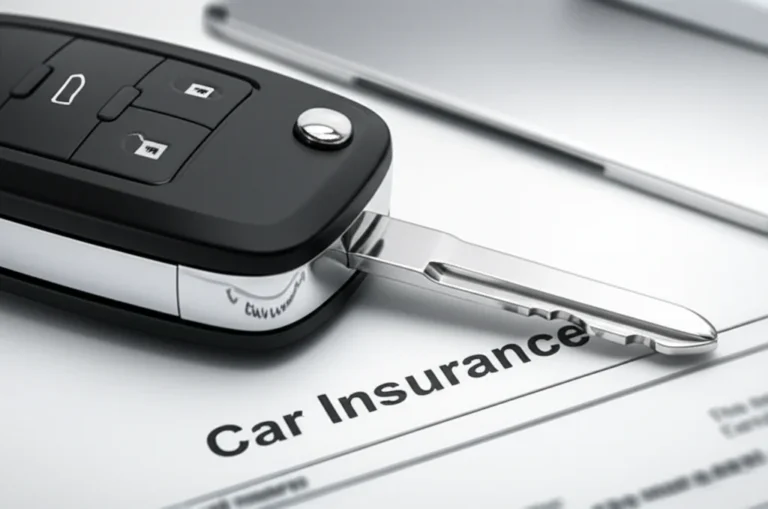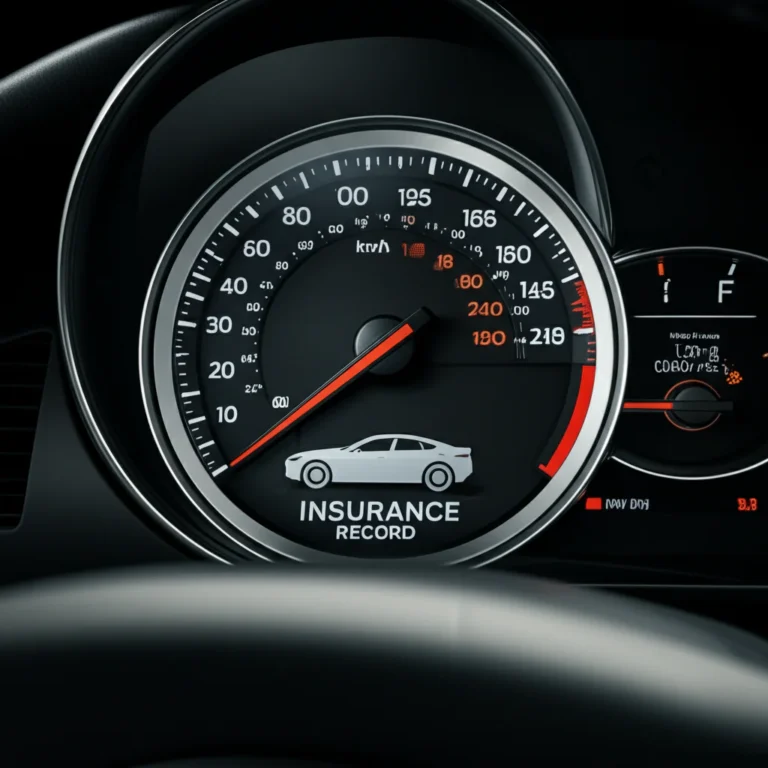Support our educational content for free when you purchase through links on our site. Learn more
10 Proven Ways to Score Cheap Car Insurance in 2025 🚗💸
Looking for cheap car insurance that actually works without leaving you high and dry? You’re not alone. Millions of drivers overpay every year because they don’t know the insider secrets to balancing price with solid coverage. Did you know that 92% of drivers who shop around save money, sometimes hundreds annually? That’s no small change!
In this guide, we’ll reveal the top 10 expert-backed strategies to slash your premiums legally and smartly—everything from maximizing discounts and leveraging telematics apps like Root, to choosing the right coverage levels and avoiding costly pitfalls of ultra-cheap policies. Plus, we’ll share real stories from our Car Brands™ team about how switching insurers saved us big bucks without sacrificing peace of mind.
Ready to drive smarter and insure smarter? Let’s dive in!
Key Takeaways
- Cheap car insurance doesn’t mean poor coverage—focus on value, not just price.
- 👉 Shop around annually to unlock hidden discounts and better rates.
- Usage-based insurance programs like Root reward safe driving with big savings.
- Bundling policies and raising deductibles are simple ways to lower premiums.
- Understand your state’s minimum requirements, but consider higher limits for true protection.
- Beware of ultra-cheap policies that skimp on customer service and coverage.
- Maintain a clean driving record—it’s your best discount over time.
Drive safe, save smart, and keep your wallet happy in 2025!
Table of Contents
- ⚡️ Quick Tips and Facts
- 🚗 The Evolution of Affordable Auto Insurance: A Brief History
- 🔍 Unmasking “Cheap” Car Insurance: Is It Too Good to Be True?
- 💰 Top 10 Ways to Slash Your Car Insurance Premiums (Legally!)
- 1. Maximize Those Discounts! Unlocking Hidden Savings
- 2. Drive Smarter, Pay Less: Telematics & Usage-Based Insurance Programs
- 3. Choose Your Ride Wisely: Vehicle Impact on Premiums
- 4. Adjusting Your Deductibles: A Calculated Risk for Lower Rates
- 5. Bundling Policies: The Power of Package Deals
- 6. Maintain a Stellar Driving Record: Your Best Discount
- 7. Boost Your Credit Score (Where Applicable): It Matters!
- 8. Review Your Coverage Annually: Don’t Set It and Forget It
- 9. Consider Dropping Comprehensive/Collision on Older Cars
- 10. Shop Around, Always! The Golden Rule of Savings
- 🛡️ Understanding Your Coverage Needs: Beyond the Bare Minimum
- 🗺️ Navigating State Minimums: What Your State Demands
- ⚠️ The Hidden Dangers of Ultra-Cheap Car Insurance: What You Might Be Missing
- 📱 Leveraging Technology: Apps, Telematics, and Usage-Based Insurance
- 🛒 The Smart Way to Shop for Quotes: Our Expert Strategy
- 💡 Car Brands™ Insider Tips & Anecdotes: Our Personal Journeys to Savings
- Conclusion: Driving Smart, Insuring Smarter
- Recommended Links: Your Go-To Resources for Auto Insurance
- FAQ: Your Burning Questions About Cheap Car Insurance Answered
- Reference Links: Our Trusted Sources
Alright team, let’s get into it! You’re here because you typed “cheap car insurance” into that magic box we call the internet, and you’ve landed in the right garage. We’re Car Brands™, and when we’re not arguing about whether a flat-plane crank V8 sounds better than a screaming V12, we’re figuring out how to keep more cash in our pockets for car parts… and that means mastering the world of car insurance.
So, buckle up! We’re about to take a deep dive into finding affordable car insurance that doesn’t leave you stranded on the side of the road, literally or financially.
⚡️ Quick Tips and Facts
Before we tear down the engine block of car insurance, here are a few high-octane tidbits to get you started:
- Shopping Around Pays Off, Big Time: A LendingTree survey found that a whopping 92% of drivers who switched insurance carriers saved money. How much, you ask? 63% saved at least $100 annually, with some saving over $200!
- Loyalty Can Cost You: That “good student” discount you got in high school? It might be ancient history. Insurers can gradually raise rates over time, so shopping your policy every year or two is a smart move.
- “Cheap” ≠ “Bad”: The goal isn’t to find the flimsiest, most bare-bones policy. It’s about finding the best value—strong coverage from a reputable company at a killer price. As Liberty Mutual puts it, “Quality and price don’t have to be a compromise.”
- Your Car Matters: Insuring a sensible sedan will almost always be cheaper than insuring a high-powered sports car from one of our favorite Car Brand Lists.
- Good Drivers Get Rewarded: Companies like Root are changing the game by basing your rate primarily on how you actually drive, not just demographics.
- Credit Scores Can Play a Role: In many states, insurers use a credit-based insurance score to help determine rates. However, this is banned or restricted in states like California, Hawaii, and Massachusetts.
🚗 The Evolution of Affordable Auto Insurance: A Brief History
Ever wonder how this whole song and dance started? Picture this: the late 1800s. Cars are new, noisy, and scaring horses. The first auto policy was sold in 1898 by Travelers Insurance Company, but it was a luxury.
The real shift happened in the 1920s. As cars became more common, so did accidents. Massachusetts stepped up in 1925 with the first mandatory insurance law, which went into effect in 1927. Connecticut followed with a “financial responsibility” law the same year, requiring drivers to prove they could pay for damages after an accident. It didn’t take long for people to realize that having insurance before a mishap was a much better idea. By the mid-20th century, most states had followed suit, creating the competitive market we navigate today. This evolution is a core part of many Car Brand Histories.
🔍 Unmasking “Cheap” Car Insurance: Is It Too Good to Be True?
You see an ad promising shockingly low rates and you think, “What’s the catch?” It’s a fair question, and one we’ve asked ourselves plenty of times. The answer is… it depends.
Understanding the Value Proposition: What “Cheap” Really Means
Let’s reframe the goal. We’re not looking for “cheap” in the sense of a flimsy, poorly made product. We’re looking for value. Think of it like buying a tool. You could buy a cheap wrench that strips a bolt on its first use, or you could buy a quality wrench at a great price that gets the job done for years.
A great value car insurance policy has:
✅ Adequate Coverage: It meets your state’s minimums and, more importantly, protects your personal assets.
✅ A Reputable Company: The insurer has strong financial ratings (like an “A” from A.M. Best) and positive customer service reviews.
✅ A Fair Price: The premium fits your budget without sacrificing the first two points.
The Pitfalls of Skimping on Coverage: A Costly Mistake?
Here’s where “cheap” can get expensive. A rock-bottom price often means you’re carrying only the state-mandated minimum liability coverage. Let’s be blunt: that’s rarely enough.
Imagine you cause an accident, and the other driver’s medical bills and car repairs total a large sum. If your policy limit is low, you are personally on the hook for the rest. That could mean wage garnishment, liens on your property, and a financial nightmare that lasts for years.
As the folks at Liberty Mutual wisely say, “The cheapest insurance can come at a high price if you’re in an accident.” It’s a gamble that we at Car Brands™ would never take with our own rides.
💰 Top 10 Ways to Slash Your Car Insurance Premiums (Legally!)
Alright, let’s get to the good stuff! How do you actually lower that bill? Here are our team’s tried-and-true strategies for getting a better rate without compromising on quality.
1. Maximize Those Discounts! Unlocking Hidden Savings
Insurers offer a buffet of discounts, and it’s your job to eat up! Don’t assume they’ll be applied automatically. Ask your agent or check online for these common price-choppers:
- Safe Driver: No accidents or tickets in the last 3-5 years? Ka-ching!
- Good Student: For young drivers with a “B” average or better.
- Multi-Policy (Bundling): Combining your auto with home or renters insurance is often one of the biggest discounts available. Liberty Mutual notes you could save over $950 by bundling.
- Safety Features: Anti-lock brakes, airbags, and anti-theft systems can all trim your premium.
- Low Mileage: Drive less than the average person? Let your insurer know!
- Pay-in-Full: Paying your entire 6- or 12-month premium upfront can often save you money over monthly installments.
2. Drive Smarter, Pay Less: Telematics & Usage-Based Insurance Programs
This is one of the biggest innovations in the industry. Companies like Root and programs like State Farm’s Drive Safe & Save use a smartphone app or a small device in your car to monitor your actual driving habits. They track things like:
- Hard braking
- Rapid acceleration
- Time of day you drive
- Mileage
If you’re a safe, responsible driver, this can lead to significant savings because your rate is based on your driving, not just statistics about people in your age group or zip code.
3. Choose Your Ride Wisely: Vehicle Impact on Premiums
We love fast cars, but we also know they come with higher insurance costs. Before you buy your next vehicle, get an insurance quote. Factors that increase premiums include high repair costs, theft rates, and horsepower. A modest sedan or SUV will almost always be cheaper to insure than a flashy sports car or a massive truck. Check out our Car Brand Comparisons to see how different models stack up.
4. Adjusting Your Deductibles: A Calculated Risk for Lower Rates
Your deductible is the amount you pay out-of-pocket on a claim before the insurance company pays the rest.
- Higher Deductible = Lower Premium
- Lower Deductible = Higher Premium
Raising your deductible from, say, a low amount to a higher one can significantly reduce your premium. The key is to choose a deductible you can comfortably afford to pay on a moment’s notice. Don’t pick a high number if you don’t have that cash in an emergency fund!
5. Bundling Policies: The Power of Package Deals
We mentioned this in the discounts section, but it’s worth its own spot. If you have renters or homeowners insurance with a different company than your auto insurer, you’re likely leaving money on the table. Get a quote from both companies for a bundled package. The savings are often substantial.
6. Maintain a Stellar Driving Record: Your Best Discount
This is the most obvious but also the most important tip. Avoiding accidents and traffic violations is the single best way to keep your insurance rates low. A clean record proves to insurers that you’re a low-risk driver, and they’ll reward you for it.
7. Boost Your Credit Score (Where Applicable): It Matters!
Like it or not, in most states, your credit history is a factor in your insurance premium. Insurers use a “credit-based insurance score,” which correlates a person’s credit management with the likelihood of filing a claim. Paying your bills on time and keeping your credit utilization low can lead to better insurance rates down the road. Note that some states, including California, Hawaii, and Massachusetts, ban or limit this practice.
8. Review Your Coverage Annually: Don’t Set It and Forget It
Life changes, and so should your insurance policy. Did you get a new job with a shorter commute? Pay off your car loan? Get married? All of these events can impact your insurance needs and rates. Set a calendar reminder to review your policy once a year to ensure you’re not overpaying or under-insured.
9. Consider Dropping Comprehensive/Collision on Older Cars
If you’re driving an older car with a low market value, there may come a point where it’s no longer cost-effective to pay for full coverage (collision and comprehensive). A good rule of thumb: if your annual premium for full coverage is more than 10% of your car’s value, it might be time to consider dropping it to liability-only.
10. Shop Around, Always! The Golden Rule of Savings
We’ll end where we started. The single most effective way to ensure you’re getting the best price is to compare quotes from multiple companies. Rates for the exact same driver and vehicle can vary by hundreds or even thousands of dollars between insurers. Don’t just renew your policy out of habit!
🛡️ Understanding Your Coverage Needs: Beyond the Bare Minimum
Okay, let’s pop the hood on what’s actually in an insurance policy. It’s not as complicated as it looks, we promise!
Liability Coverage: Protecting Others (and Yourself!)
This is the core of any policy and is required by law in nearly every state. It covers damages you cause to other people and their property. It’s broken into two parts:
- Bodily Injury Liability (BI): Pays for the medical bills, lost wages, and pain and suffering of people you injure in an at-fault accident.
- Property Damage Liability (PD): Pays to repair or replace the other person’s car or property (like a fence or mailbox) that you damage.
Collision Coverage: For Your Ride’s Bumps and Bruises
This coverage pays to repair or replace your own car if it’s damaged in a collision with another vehicle or object (like a tree or a guardrail), regardless of who is at fault. If you have a loan or lease on your vehicle, your lender will almost certainly require you to have this.
Comprehensive Coverage: Guarding Against the Unexpected
Think of this as “non-collision” coverage. It protects your car from damage caused by things other than a crash. This includes:
- Theft and vandalism
- Fire
- Hail or flooding
- Hitting an animal (a surprisingly common claim!)
- Falling objects
Together, Liability, Collision, and Comprehensive are often referred to as “full coverage.”
Optional Coverages: Tailoring Your Protection for Peace of Mind
These are the à la carte items you can add to your policy for extra protection:
- Uninsured/Underinsured Motorist (UM/UIM): What happens if someone hits you and they have no insurance or not enough to cover your bills? This coverage steps in to protect you. It’s a must-have in our book.
- Medical Payments (MedPay) or Personal Injury Protection (PIP): Helps pay for your and your passengers’ medical expenses after an accident, regardless of fault.
- Rental Reimbursement: Covers the cost of a rental car while yours is in the shop after a covered claim.
- Roadside Assistance: Provides help for things like flat tires, dead batteries, or towing.
🗺️ Navigating State Minimums: What Your State Demands
Every state has its own laws about how much insurance you’re required to carry. These are known as “minimums,” and it’s crucial to know what they are where you live. But remember our warning: the state minimum is rarely enough to fully protect you in a serious accident.
No-Fault vs. At-Fault Systems Explained
States generally fall into one of two categories for handling accident claims.
- At-Fault States (The Majority): In the 38 “at-fault” or “tort” states, the driver who caused the accident is responsible for paying for the other party’s damages through their liability insurance. You can file a claim with the other driver’s insurer or sue them directly.
- No-Fault States: In the 12 “no-fault” states, your own insurance policy pays for your medical expenses up to a certain limit, regardless of who caused the crash. This is done through Personal Injury Protection (PIP) coverage. This system is designed to speed up payments for injuries and reduce lawsuits. However, you can typically still sue the at-fault driver for property damage and for severe injuries that meet a certain threshold.
A few states, like Kentucky and Pennsylvania, have “choice no-fault” systems where you can choose which type of policy you want.
⚠️ The Hidden Dangers of Ultra-Cheap Car Insurance: What You Might Be Missing
We’ve all been tempted by that unbelievably low quote. But before you click “buy,” consider what might be lurking in the fine print of a cut-rate policy.
Inadequate Protection: The True Cost of Low Limits
We can’t stress this enough. A policy with minimum liability limits might save you a few bucks a month, but it could cost you your life savings after one bad accident. Always choose liability limits that are high enough to protect your net worth.
Poor Customer Service & Claims Experience: When You Need Them Most
The true test of an insurance company is how they treat you when you need to file a claim. Some budget insurers cut costs by skimping on customer service. This can mean long hold times, unresponsive agents, and a frustrating, drawn-out claims process right when you’re most stressed. A key reason people switch insurers, besides cost, is dissatisfaction with their old insurer’s service.
Limited Roadside Assistance & Other Perks: Are You Stranded?
That cheap policy might not include extras like roadside assistance or rental car reimbursement. While you can often buy these separately, having them integrated into your policy is convenient and can be more cost-effective. Don’t find out you don’t have towing coverage when you’re stuck on the highway at 2 a.m.
📱 Leveraging Technology: Apps, Telematics, and Usage-Based Insurance
Welcome to the future of car insurance! Telematics, or usage-based insurance (UBI), is a game-changer, especially for safe drivers.
How Telematics Can Save You Money: Driving Data for Discounts
As we touched on earlier, telematics uses GPS and onboard diagnostics to send data about your driving habits to your insurer. This isn’t just about spying on you; it’s about creating a personalized risk profile.
- How it works: You either use a smartphone app or plug a small “black box” device into your car’s OBD-II port.
- What it tracks: Speed, acceleration, braking habits, mileage, and the time of day you drive.
- The result: Safe drivers are rewarded with lower premiums, while riskier drivers might see higher rates. It creates a fairer pricing system based on individual behavior rather than broad demographic data.
Companies like Root have built their entire business model on this, promising that “Better drivers deserve better rates.”
Privacy Concerns vs. Potential Savings: Is It Worth It?
Of course, the big question is privacy. You’re sharing your driving data, including your location, with a company. For many, the potential savings—Root claims their best drivers save up to $900/year—are well worth it. Reputable insurers have strict privacy policies, but it’s a personal decision you have to weigh.
🛒 The Smart Way to Shop for Quotes: Our Expert Strategy
Ready to find that perfect policy? Don’t just start plugging your info into random websites. Follow our expert-approved process to get the best results.
Gathering Your Information: Be Prepared!
To get accurate quotes, you’ll need some info handy:
- Driver’s license numbers for all drivers in the household.
- Vehicle Identification Number (VIN) for all cars.
- The address where the vehicles are garaged.
- Your current insurance policy’s declaration page (so you can compare coverages).
- An estimate of your annual mileage.
Comparing Apples to Apples: Key Metrics Beyond the Price Tag
When quotes start rolling in, it’s tempting to just look at the price. Don’t! Make sure you are comparing identical coverage levels, limits, and deductibles. A quote might look cheaper because it has a much higher deductible or lower liability limits.
As the #featured-video in our article points out, using a comparison tool like Insurify can make this process much easier. It allows you to enter your information once and see side-by-side quotes from multiple companies in just a few minutes. The video highlights that while these tools are a fantastic starting point, some smaller insurers might require you to finalize details on their own site.
When to Use an Independent Agent vs. Direct Insurer: Pros and Cons
You have two main paths for buying insurance:
- Direct Insurers: Companies like GEICO or Progressive sell directly to you online or over the phone.
- Pros: Often fast, easy, and can have competitive pricing.
- Cons: You’re on your own to figure out coverage, and you only see quotes from that one company.
- Independent Agents: These agents work with multiple insurance companies to find the best policy for you.
- Pros: Expert advice, one-stop shopping for multiple quotes, and a personal advocate if you have a claim.
- Cons: May not represent every single company (especially some direct-to-consumer brands).
For most people, we recommend getting quotes both directly and from an independent agent to cover all your bases.
👉 Shop Top Insurance Providers on:
- Comparison Shopping: Insurify | The Zebra
- Major Providers: State Farm | GEICO | Progressive | Allstate
💡 Car Brands™ Insider Tips & Anecdotes: Our Personal Journeys to Savings
Let me tell you a quick story. Our lead editor, Mike, was a loyal customer with the same insurer for over a decade. He figured his “loyalty discount” was saving him a bundle. His renewal came in, and the price had jumped—again. Frustrated, he spent 30 minutes on a comparison site, just to see.
The result? He found a policy with a more reputable company (Allstate) that had higher liability limits and added roadside assistance for nearly $600 less per year. He switched on the spot. The moral of the story? That loyalty you’re showing might be a one-way street. Don’t be afraid to see what else is out there! It’s a key piece of news in our Auto Industry News section that brand loyalty doesn’t always pay.
Conclusion: Driving Smart, Insuring Smarter 🚦
We’ve cruised through the winding roads of cheap car insurance, and here’s the bottom line: cheap doesn’t have to mean risky—if you know where to look and what to ask. The cheapest policy on the block might save you a few bucks upfront, but it can cost you dearly if it leaves you underprotected.
Our expert advice? Focus on value over price. Look for reputable insurers with strong financial ratings and good customer service. Use tools like Insurify to compare quotes side-by-side, and consider innovative options like Root that reward your actual driving habits.
Remember Mike’s story? Loyalty is great, but complacency costs. Shop around regularly, maximize discounts, and tailor your coverage to your needs—not just the minimum your state requires.
If you’re considering usage-based insurance, Root’s app-driven approach is a standout for safe drivers seeking savings. It’s not perfect for everyone (privacy concerns and state availability vary), but for many, it’s a game-changer.
In short: Be smart, be thorough, and don’t settle for “cheap” without checking what you’re really getting. Your car, your wallet, and your peace of mind will thank you.
Recommended Links: Your Go-To Resources for Auto Insurance 🛒
Ready to start shopping? Here are some trusted platforms and insurers to get you rolling:
- Root Insurance: Root Official Website | Apple App Store | Google Play Store
- Insurify (Comparison Tool): Insurify.com
- State Farm: State Farm Auto Insurance
- GEICO: GEICO Auto Insurance
- Progressive: Progressive Auto Insurance
- Allstate: Allstate Auto Insurance
FAQ: Your Burning Questions About Cheap Car Insurance Answered ❓
What are the best ways to find cheap car insurance?
The best way is to shop around using online comparison tools like Insurify or The Zebra. These platforms let you enter your info once and get multiple quotes instantly. Also, consider usage-based insurance programs like Root that price you based on your actual driving habits. Don’t forget to ask about discounts and bundling options.
How can I lower my car insurance premiums?
- Maintain a clean driving record: No accidents or tickets.
- Increase your deductible: If you can afford a higher out-of-pocket cost.
- Bundle policies: Combine auto with home or renters insurance.
- Drive a safer, less expensive car: Insurance costs vary by vehicle.
- Take advantage of discounts: Good student, multi-car, safety features, and more.
- Use telematics programs: Let insurers track your safe driving for discounts.
Are there discounts available for cheap car insurance?
Absolutely! Common discounts include:
- Safe driver discounts
- Multi-policy (bundling) discounts
- Good student discounts
- Low mileage discounts
- Pay-in-full discounts
- Anti-theft and safety feature discounts
Each insurer offers different discounts, so ask specifically what’s available.
What factors affect the cost of car insurance?
Several factors influence your premium:
- Driving record: Accidents and tickets increase rates.
- Vehicle type: High-performance or expensive cars cost more.
- Location: Urban areas typically have higher rates.
- Age and gender: Younger drivers often pay more.
- Credit score: In many states, better credit means lower premiums.
- Coverage levels and deductibles: Higher coverage and lower deductibles increase cost.
- Annual mileage: More driving can lead to higher premiums.
Is it cheaper to insure a new or used car?
Generally, used cars cost less to insure because their value is lower, which reduces comprehensive and collision coverage costs. However, some new cars come with advanced safety features that can qualify for discounts. Also, new cars often require full coverage if financed or leased.
How does my driving record impact car insurance rates?
Your driving record is one of the most important factors. Clean records signal low risk, earning you lower premiums and better discounts. Accidents, tickets, or DUIs raise your risk profile and can cause significant rate hikes or even denial of coverage.
Can bundling car insurance with other policies save money?
✅ Yes! Bundling your auto insurance with homeowners, renters, or other policies often results in substantial discounts. Insurers like Liberty Mutual highlight savings of hundreds of dollars annually when you bundle. It also simplifies managing your insurance.
Reference Links: Our Trusted Sources 📚
- Liberty Mutual: Cheap Car Insurance
- Insurify: Car Insurance Comparison
- Root Insurance: Car insurance for good drivers
- A.M. Best Company: Insurance Ratings
- National Association of Insurance Commissioners (NAIC)
- State Farm: Drive Safe & Save Program
- GEICO: Auto Insurance Discounts
- Progressive: Usage-Based Insurance
- Allstate: Insurance Discounts
We hope this guide helps you navigate the twists and turns of cheap car insurance with confidence. Remember, the best policy is one that protects you well without draining your wallet. Drive safe, save smart, and keep those wheels turning! 🚙💨






